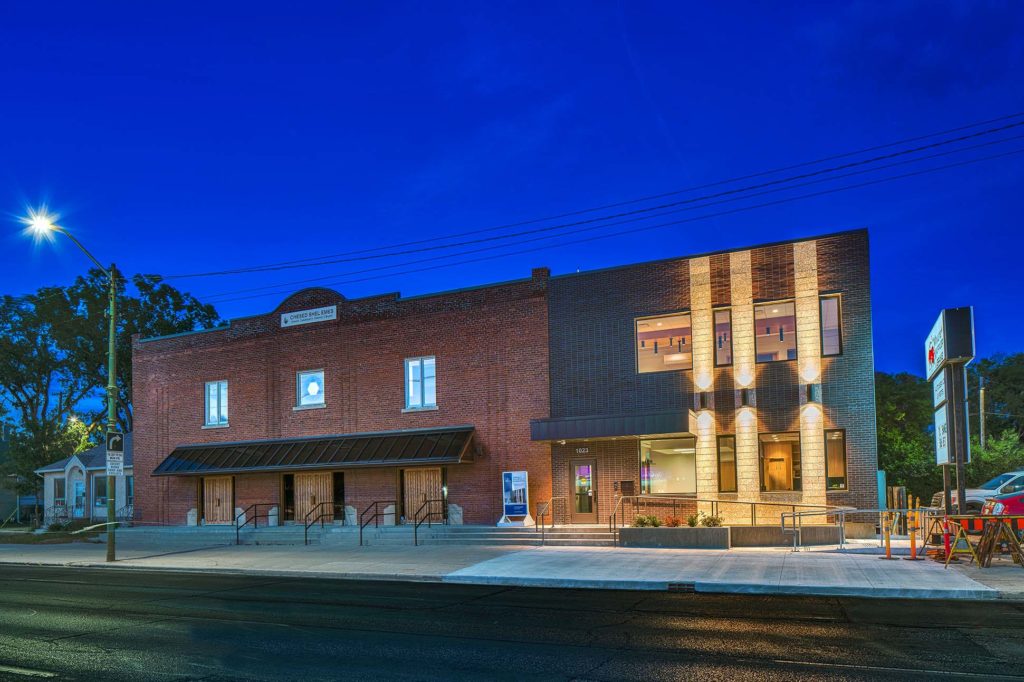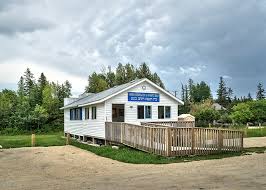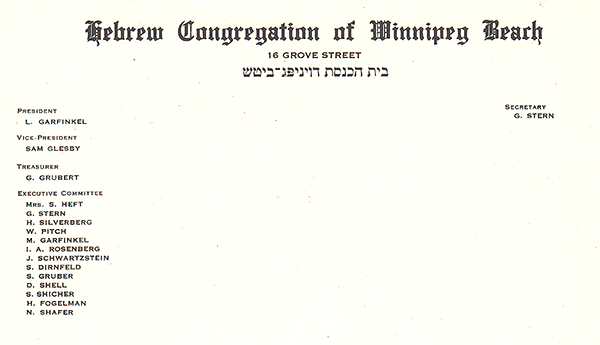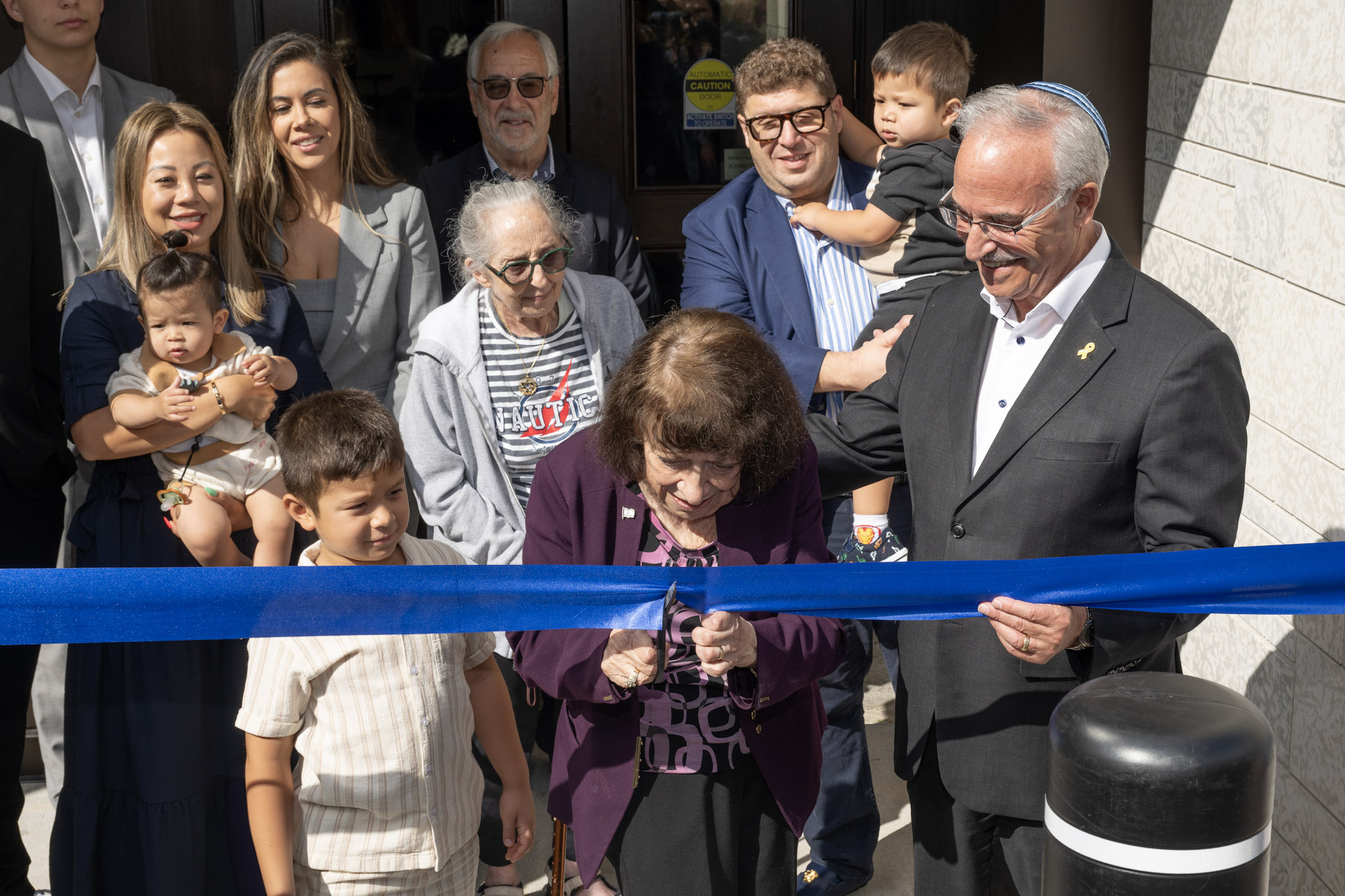Local News
After a three-year delay Winnipeg Jewish Theatre will finally present the premiere of “Narrow Bridge” by local playwright Daniel Thau-Eleff
By MARTIN ZEILIG Daniel Thau-Eleff was looking forward to seeing his play about a transgender person, “Narrow Bridge, “ on stage back in March 2020.
“But we were interrupted by the pandemic,” the Winnipeg-based playwright, performer, director, and artistic producer of Moving Target Theatre, said during a Zoom conversation with this reporter on January 26.
Ben Baader, an associate professor of history at the University of Manitoba, and the inspiration for his play, was interviewed along with Thau-Eleff.
Narrow Bridge will now premiere March 11 – 19, 2023 (with a preview on March 9) at the Berney Theatre in the Asper Campus.
Thau-Eleff and Dr. Baader will also discuss the play and its history on Sunday, March 12 at Limmud 2023—Winnipeg’s annual Jewish cultural festival at the Asper Jewish Community Centre — in a joint presentation called “TRANSGENDER AND ORTHODOX: TWO FRIENDS, A JOURNEY, AND A PLAY.”
“The play is a moving and engaging story told with heart and humour,” notes the publicity material.
“The main character, Sholem, transitions genders while discovering Orthodox Judaism. Walking the tightrope of family dynamics, history, activism and Talmud study, Sholem wonders if, as Rebbe Nachman said, “‘All the world is a very narrow bridge.’”
Featuring Elio Zarrillo, Alissa Watson, and Rhea Akler in their WJT premieres, along with long-time WJT favourite Harry Nelken, the play will be directed by “Drag Heals” creator Tracey Erin Smith.
Thau-Eleff’s plays are “personal-political,” meaning they explore an issue “usually related to human rights or social justice, through individual characters’ struggles,” mixing documentary and autobiographical elements into fiction, he says.
“My good friend, Ben, was the inspiration and has been on the journey with me the whole time,” he adds.
“This is the first interview we’re doing right now (about “Narrow Bridge”). Ben is both transgender and practices Orthodox Judaism. He wasn’t Orthodox when we first became friends. I’ve been lucky to be part of this journey.”
Thau-Eleff noted that the idea for Narrow Bridge began some 10 years ago after Baader returned from a national retreat in the U.S. hosted by Eshel.
“Eshel’s mission is to create a future for Orthodox lesbian, gay, bisexual, and transgender individuals, and their families,” says its website.
“Through its innovative and culturally sensitive programming, Eshel supports LGBTQ Jews, opening hearts, minds and doors in traditional Jewish communities. Eshel envisions a world where Orthodox LGBTQ individuals can live out their lives in the Orthodox communities of their choice.”
Thau-Eleff noted that he met with Baader a short time after the Eshel retreat.
“We were talking about this apparent impossibility that so many people, whom Ben had just met, are living a transgender life within the Orthodox tradition, where there’s a barrier down the middle of the synagogue separating men and women,” he said.
“So, it seems impossible and yet people find a way to make it work. I was really fascinated by that contradiction.”
“Then, I was visiting another city and sitting in a coffee shop with an artistic director, whom I barely knew. We were getting to know each other. At the end of the conversation, he said, ‘Well, I’m interested in your play about transgender Orthodox Jews.”’
Thau-Eleff replied to his interlocutor that it wasn’t a play, just a story.
“Then, I returned to Winnipeg and I told that story to Ben and he said, ‘I would help you write that play’,” the playwright said.
“And, we started talking. I interviewed other trans Jewish and non-Jewish people. I read a few books on the subject and started writing. In 2018, we did a reading of the first draft of the Winnipeg Jewish Theatre’s “So New Festival.” That was great.
“But, a lot of the writing took place between 2018 and the present. Now, we’re back into things.”
Baader reflected that he came back from the Eshel retreat empowered by the “amazing and beautiful community; and how people, who are deeply committed to two different truths, are insisting on living their lives even though they are often shunned by their communities.
“It’s a space of tremendous beauty and courage,” he said.
“At the time being trans was much more scandalous than it is today. It’s less provocative today than it was ten years ago.”
Thau-Eleff added that at Limmud he’ll be talking about the process he uses when writing a play.
“When I launch a writing project, it’s always an opportunity to learn,” he emphasized.
“In this case, I got to learn from Ben’s and others’ experiences, and to explore my own experiences with gender and Judaism.”
Local News
Thank you to the community from the Chesed Shel Emes

We’re delighted to share a major milestone in our Capital Campaign, “Building on our Tradition.” Launched in November 2018, this campaign aimed to replace our outdated facility with a modern space tailored to our unique needs. Our new building is designed with ritual at its core, featuring ample preparation space, Shomer space, and storage, creating a warm and welcoming environment for our community during times of need.
We’re grateful to the nearly 1,000 generous donors who contributed over $4 million towards our new facility. A $750,000 mortgage will be retired in November 2025, completing this monumental project in just seven years.
We’re also thrilled to announce that our Chesed Shel Emes Endowment Fund has grown tenfold, from $15,000 to $150,000, thanks to you, the Jewish Foundation of Manitoba’s FundMatch program, and Million Dollar Match initiative in 2024. Our fund helps ensure that everyone can have a dignified Jewish funeral regardless of financial need.
As we look to the future, our goal remains to ensure the Chevra Kadisha continues to serve our community for generations to come. Our focus now shifts to replenishing our savings account and growing our JFM Endowment fund.
We’re deeply grateful for your support over the past several years.
It’s our privilege to serve our community with care and compassion.
With sincere appreciation,
Campaign cabinet: Hillel Kravetsky, Gerry Pritchard, Stuart Pudavick,
Jack Solomon, and Rena Boroditsky
Murray S. Greenfield, President
Local News
Winnipeg Beach Synagogue about to celebrate 75th anniversary

By BERNIE BELLAN (July 13) In 1950 a group of cottage owners at Winnipeg Beach took it upon themselves to relocate a one-room schoolhouse that was in the Beausejour area to Winnipeg Beach where it became the beach synagogue at the corner of Hazel and Grove.
There it stayed until 1998 when it was moved to its current location at Camp Massad.
On August 2nd members of the synagogue will be holding a 75th anniversary celebration.

As part of the celebration anyone who is a descendant or relative of any of the original members of the first executive committee (as seen in the photo here) is invited to attend the synagogue that morning.
If you are a relative please contact Abe Borzykowski at wpgbeachshule@shaw.ca or aborzykowski@shaw.ca to let Abe know you might be attending or for more information about the 75th anniversary celebration.
We will soon be publishing a story about the history of the beach synagogue, which is something I’ve been writing about for over 25 years.
Local News
Vickar Family cuts ribbon on new Tova Vickar and Family Childcare Centre

By MYRON LOVE In the words of Larry Vickar, the Shaarey Zedek’s successful Dor V’ Dor Campaign “is not only a renewal of the synagogue but truly a renewal movement of Jewish life in our community.”An integral part of that renewal movement was the creation of a daycare centre within the expanded synagogue. On Monday, June 23, Larry and Tova Vickar cut the ribbon, thereby officially opening the Tova Vickar and Family Childcare Centre in the presence of 100 of their family members, friends and other supporters of the project.
The short program preceding the morning ribbon-cutting began with a continental breakfast followed by a welcome by both Fanny Levy, Shaarey Zedek’s Board President, and Executive Director Dr. Rena Secter Elbaze. In Elbaze’s remarks, she noted that Larry and Tova wanted their family (including son Stephen and family, who flew in from Florida) and friends at the event to celebrate the opening of the Tova Vickar and Family Childcare Centre, “not because of the accolades, but because, as Larry put it, he hopes that their investment in the congregation will inspire others to do the same.”
“When Larry and I spoke about what this gift meant to him and the message he wanted people to take away,” she continued, “I couldn’t help but connect it to the teachings of Reb Zalman Schachter-Shalomi whose book – Age-ing to Sage-ing – changes the whole way we look at the concept of ageing and basing it on our ancestral teachings.”
She explained that his concept of “Sage-ing” is based on three key ideas – Discover your meaning and purpose; accept our mortality and think about the legacy you want to leave.
“Larry spoke about these exact concepts when we met,” she said.
Elbaze also noted the presence of Shaarey Zedek’s newly-arrived senior Rabbi Carnie Rose, former Rabbi Alan Green, and area MLAs Mike Moroz and Carla Compton.
Larry Vickar expressed his great appreciation for all those in attendance. “Tova and I are deeply moved to stand here with you today for this important milestone in our community”, he said. “We are grateful to be surrounded by all of you, the people we care about, our family and friends… you who have touched our lives and played some part in our journey.”
